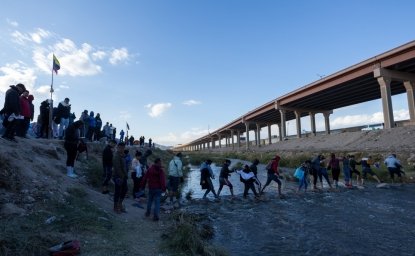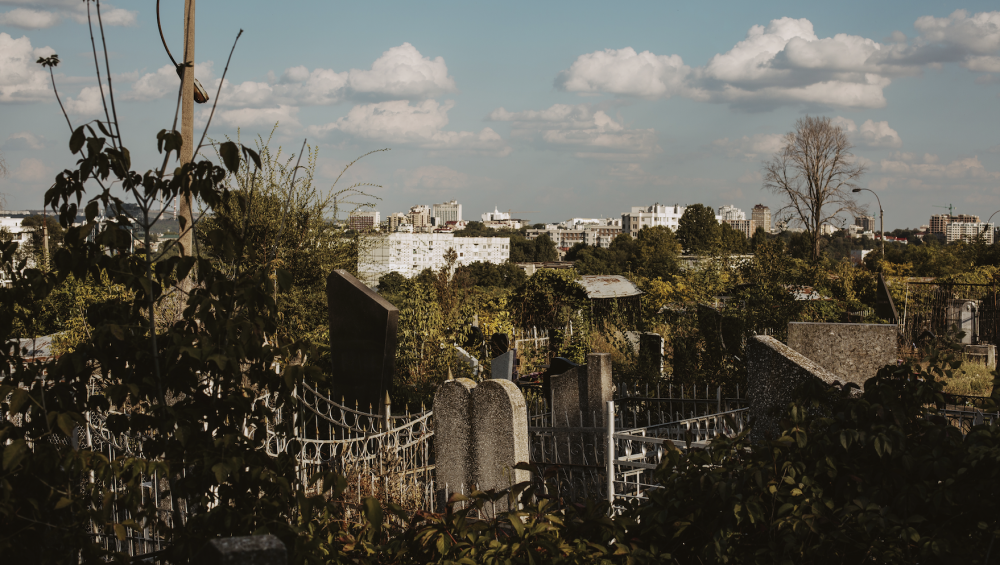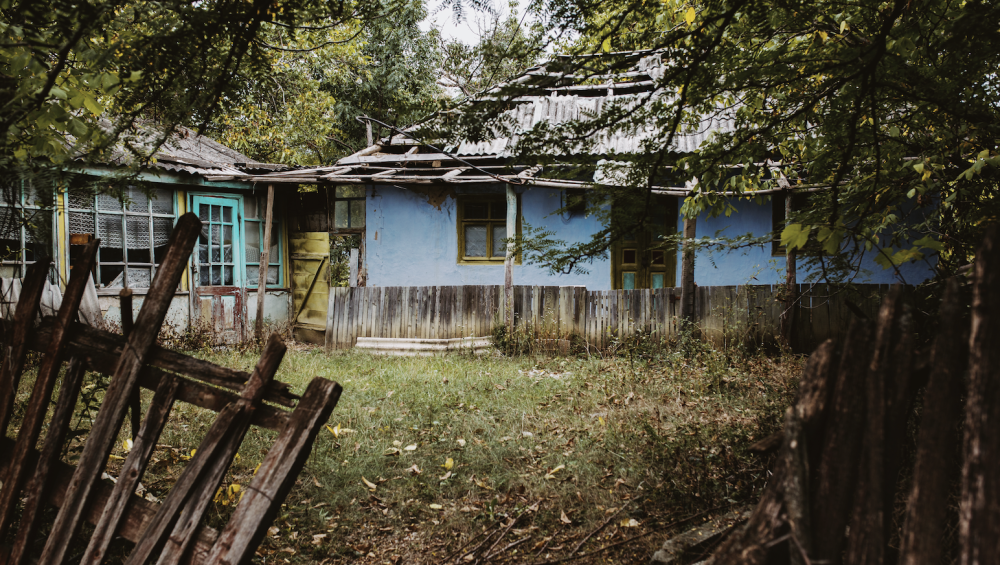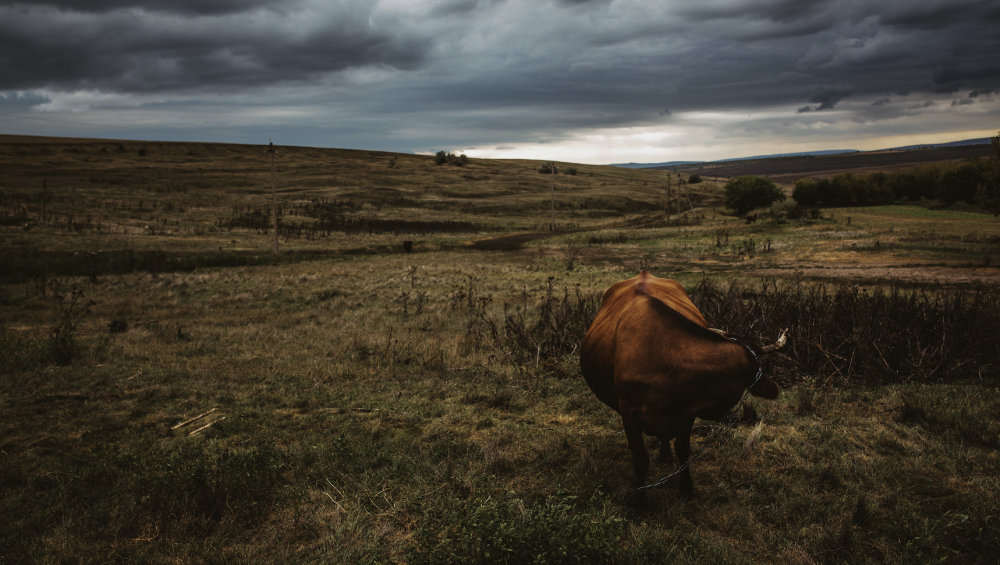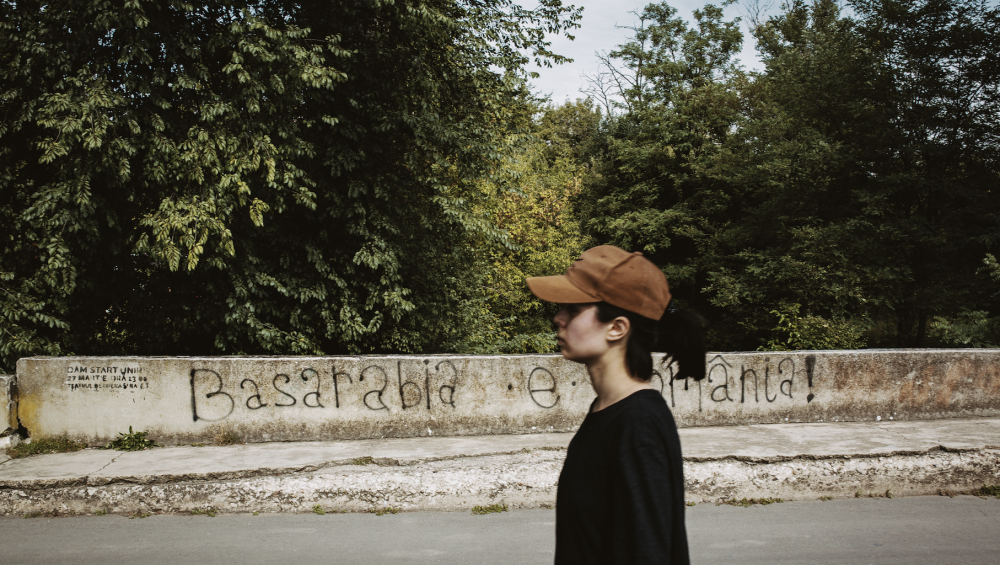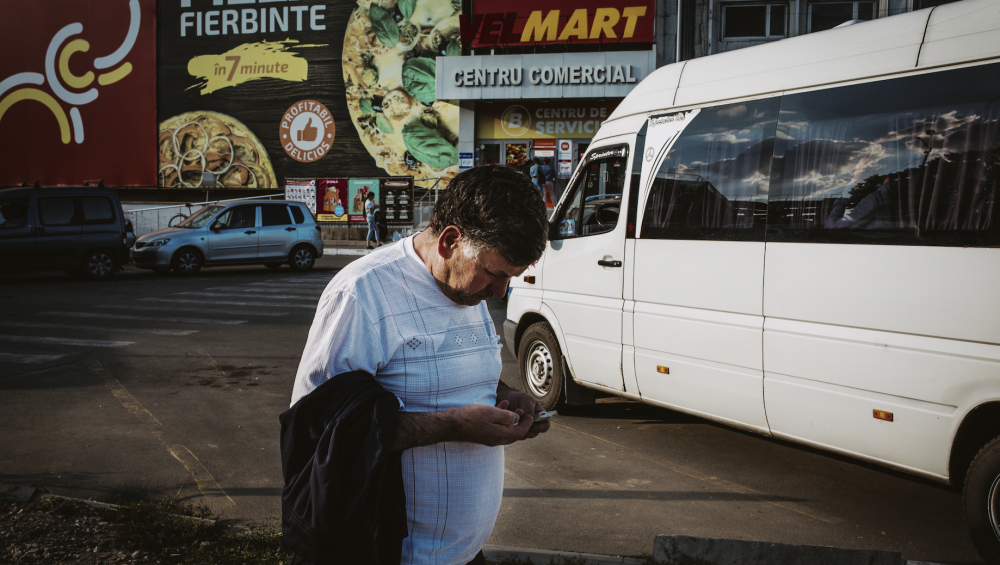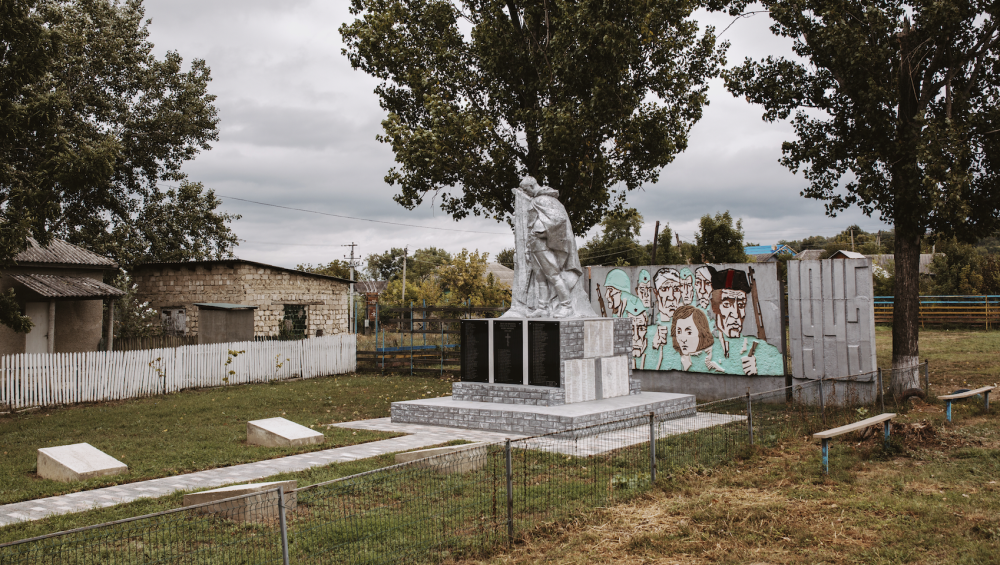As distillations of the history of migration go, the experience of Moldova is hard to top.
From the late-19th century onwards, this expanse of fertile, mostly rolling farmland between the Carpathian Mountains and the Dniester River valley has endured a rash of debilitating displacements. Conflict and other crises emptied whole villages of their young. The cities still wear the loss of their largely vanquished minority communities heavily. Some parts of the region are now particularly sparsely populated precisely because of how many of their inhabitants left before the Second World War. (The Republic of Moldova occupies about half of the historic region of Moldova, or Moldavia, the rest of which now lies in neighboring Romania and Ukraine.)
Then, from 1991 through to the present day, the newly formed Republic of Moldova weathered the collapse of the Soviet Union worse than most of its other former constituent parts. Since independence, at least a third of its citizens have moved abroad, according to state figures, one of the most dramatic depopulations of any nation on Earth. Hundreds of villages have been reduced to communities in name only, kept alive by a few lonely old people, if anyone at all.
“The village just lost its people.”
“The jobs disappeared, the kids moved away,” explained 82-year-old Dasha Ostapenko, a former employee of the Soviet-era collective farm at Triccolici and one of three remaining inhabitants in what was once a community of a few hundred. “The village just lost its people.”
Now, in a partial—and likely temporary—inversion of a century of migration patterns, the country is playing host to one of the world’s largest per capita populations of refugees. Since the Russian invasion began in February 2022, tens of thousands of Ukrainians have settled in Moldovan towns and cities, turning some car parks into seas of Ukrainian-plated vehicles. Hundreds of thousands more have transited through the republic to other European states, even as some of their countryfolk have started to return home.
And yet, in this land that’s often struggled to catch a break, there might be more to come. Moldova has been racked by deepening droughts – and the weak state’s inability to effectively respond to them has helped make it one of the most climate vulnerable countries in Europe. This summer, for the third time in the past four years, much of the countryside was dotted with field after field of dead or dying sunflowers. Without concerted action (and perhaps even with it), both farmers and environmentalists fear that these worsening agricultural conditions could turn the countryside into a people-less wasteland in no time at all.
“In 20 years, Moldova could be like a desert,” says Ilya Trombitsky, director of Eco-TIRAS, a water and forestry-focused NGO, and a former MP who helped to draft much of the country’s environmental legislation. “The whole country is dying, but with climate change the villages are dying fastest of all,” echoed Iulian Toma, a farmer from near Bălți.
Moldova’s fraught century of migration and its emerging climate crisis puts it in a compelling, if desperately unwanted, teachable position. Because while climate-related migration is currently mostly discussed in the context of poorer, more populous parts of the world, it is increasingly striking wealthier places too. In the United States, whole communities from Louisiana to Alaska have been uprooted by climate stresses. In Germany, around 200 people were killed and many more permanently displaced in the summer of 2021 by floods that scientists said likely couldn’t have happened in a cooler world.
As authorities across Europe reel from the continent’s hottest summer on record (far outpacing the summer of 2021, which had itself been the hottest on record) they might do well to look to the state among them that’s had more exposure than most to migration in its many forms. How, for example, would the populations of similarly agrarian parts of the Balkans respond to stronger climate shocks? If displaced, where might they go and to what end? In Moldova, this node of major past, present, and possibly intense future migration, observers might find some hints.
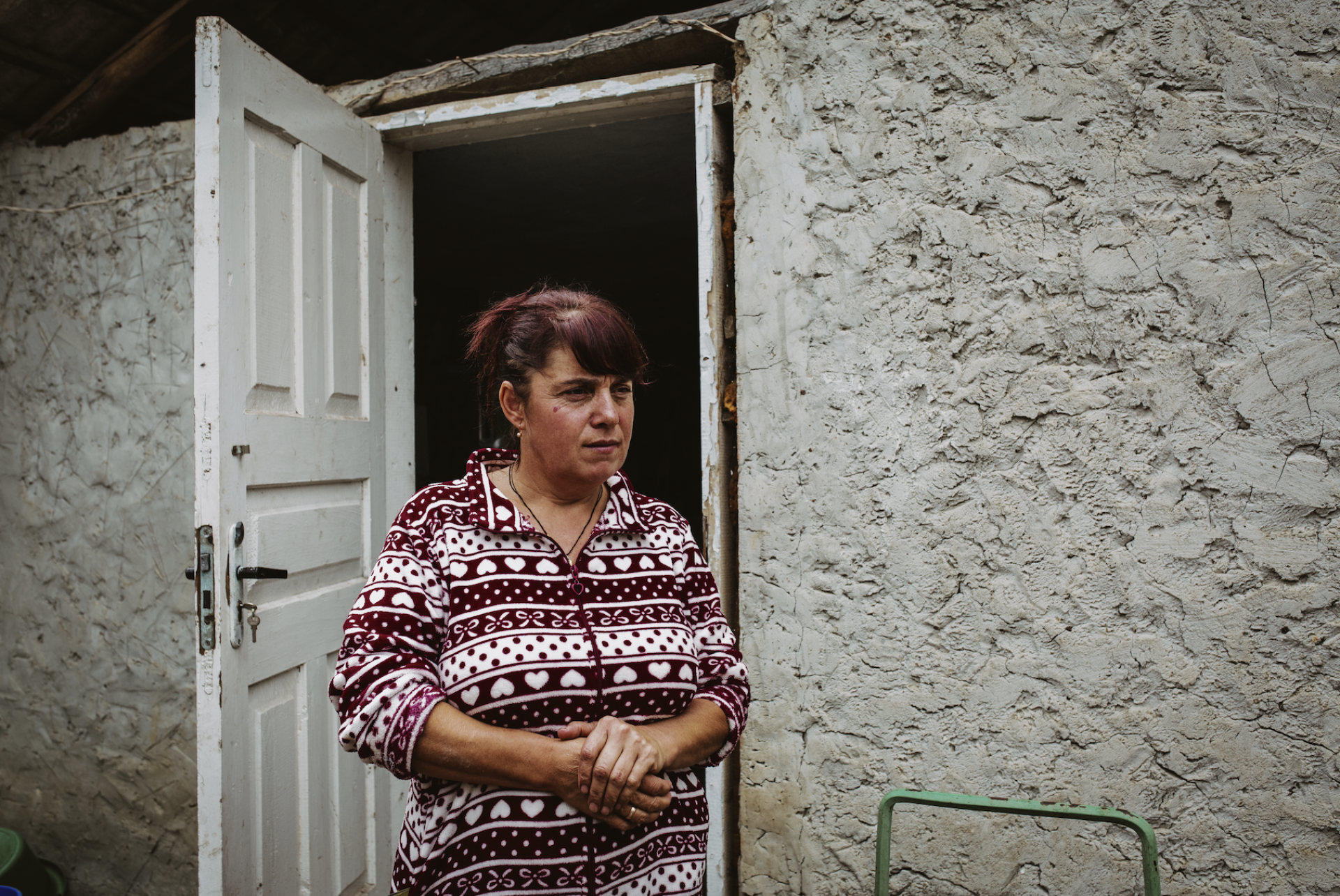
Moldova and Migration: The Urgent Lessons
Moldova’s legacy—and its present situation—offer a number of specific broader takeaways on how to better navigate today’s migration crises.
Refugees favor the familiar.
Lost often amid the focus on inter or intra-state migrant flows is the fact that relatively few people actually want to move, especially to another country. But if they must leave, many refugees prefer places that are both culturally and geographically recognizable. About 80,000 Ukrainian refugees have at least temporarily settled in Moldova—a nation that resembles the landscape of nearby rural Odessa and where, like the refugees, locals speak Russian as a first or second language. In making their home among neighbors, Ukrainians have followed other cohorts of refugees in effectively prioritizing familiarity over the superior assistance that richer—and, in their case, equally accessible—European states might provide.
“We share a mentality. We share a temperament,” said Irina Strypova, a TV presenter from Odessa who has found work at a broadcaster in Moldova. “Life here is very like life at home.” NGOs in Chisinau say that they’ve received refugees who had traveled first to Germany, only to return to Moldova, citing a preference for its cheaper cost of living and more “like-minded people.” After independence, wantaway Moldovans mostly traveled to Russia and Romania, the states where they boast the strongest linguistic and historical ties – and also the states they could most easily enter until citizens’ access to the EU was eased in 2014.
Refugees can need more help than one might imagine.
Precisely because relatively few people see migration as desirable, many put it off until intense danger or immiseration leaves them no choice. In the words of poet Warsan Shire, ‘No one leaves home, unless home is the mouth of a shark.’ As a consequence, those who flee across borders can represent a disproportionately vulnerable cross section of the population—with needs that don’t necessarily reflect individuals’ pre-crisis levels of prosperity. This can be especially true in those nearby culturally familiar states, which frequently entice less educated, less well-traveled, and more impoverished people.
“I am embarrassed. I am a competent person. But I was like a child when removed from my home,” she said.
The Ukrainian experience largely bears this out. After a Russian bomb damaged her apartment building and shattered her life as a retired nurse in Mykolaiv, a woman who gave her name as Yulia fled to Chisinau with little more than a family photo album. Over her first few months in Moldova, she needed regular therapy to cope with her experience of war. Then she needed more tangible help to obtain winter—and, later, summer—clothes. At the time, Yulia added, these tasks were too much for her to handle. “I am embarrassed. I am a competent person. But I was like a child when removed from my home,” she said.
A history of migration can bring greater acceptance of (some) refugees.
Not all refugee welcomes are created equal. Yet having seen so many of their kin move over the previous century and a half, Moldovans have more understanding of the trauma of migration than most. That empathy has seemingly contributed to one of the warmest embraces of Ukrainians anywhere in Europe. Many communities have made tremendous sacrifices on the new arrivals’ behalf, despite being one of the poorest countries on the continent. For example, residents of Căușeni, a large town near the border, hosted 3,000 refugees in their homes for much of 2022. They’ve done so without any state assistance and, in many instances, while lacking key amenities of their own. “Not all citizens live in luxury,” said Anatolie Dontu, the mayor. “For instance, we tried to place [migrants] with people who had indoor toilets.”
However, few refugee advocates have any delusions that this kind of reception would be extended to all. Ukraine’s neighbors have been as welcoming of Ukrainians as they were largely dismissive of Syrians from 2014 onwards. That racial selectiveness has stark historical roots too, with the emerging nation states of Central and Eastern Europe generally welcoming members of their own dominant ethnic and/or linguistic groups from the early 1900s and often forcibly rejecting others. Almost 60 million Europeans left for North and South America between the mid-19th and mid-20th centuries, with some of the largest per capita shares coming from Moldova.
Effective migrant integration requires strong state capacity.
For all host communities’ best efforts, even seemingly “good” migrant fits can be awkward. This is especially true because the culturally and geographically familiar places that many migrants favor often suffer from the same lack of state capacity as their own areas or countries of origin. For example, employers in Chisinau complain of a drastic shortage of workers, one that’s been exacerbated by continuing outflows of their countrymen and women. Roughly 40-50,000 Moldovans are still emigrating every year from a country of fewer than three million. And yet small businesses insist that the state is so inflexible that many have been unable to navigate labor laws to take advantage of this sudden windfall in potential new employees, to everyone’s loss.
“Will they be here in a year? Six months? What rules apply?” said Victor Baciu.
Ukrainian refugees’ very understandable lack of clarity about their own futures hasn’t helped. “Will they be here in a year? Six months? What rules apply?” said Victor Baciu, a farmer from near Bălți, the second city, who says his yields are slipping in part because of a paucity of farmhands. Fearful of the prospect of Russia’s war spilling into Moldova, which is within earshot of some airstrikes in Ukraine and wrestles still with the frozen Transnistria conflict, at least three Ukrainian interviewees said they carry their passports and those of their children at all times.
Inequitably distributed aid – or the perception of it – can damage social cohesion.
Inevitably, perhaps, even the smoothest of migrant-host community relations can waver. As the Russian invasion persists, that gracious welcome of Ukrainians is encountering its first headwinds. Refugees and NGOs say that much of this new tension is grounded in struggling Moldovans’ perception that the foreigners—and the foreigners alone—are receiving support that they themselves desperately need. Facebook groups are alive with often dramatically exaggerated accounts of the aid that Ukrainians are receiving – at a time when inflation is running at over 30 percent in Moldova and few of its citizens have much idea how they’ll heat their homes this winter.
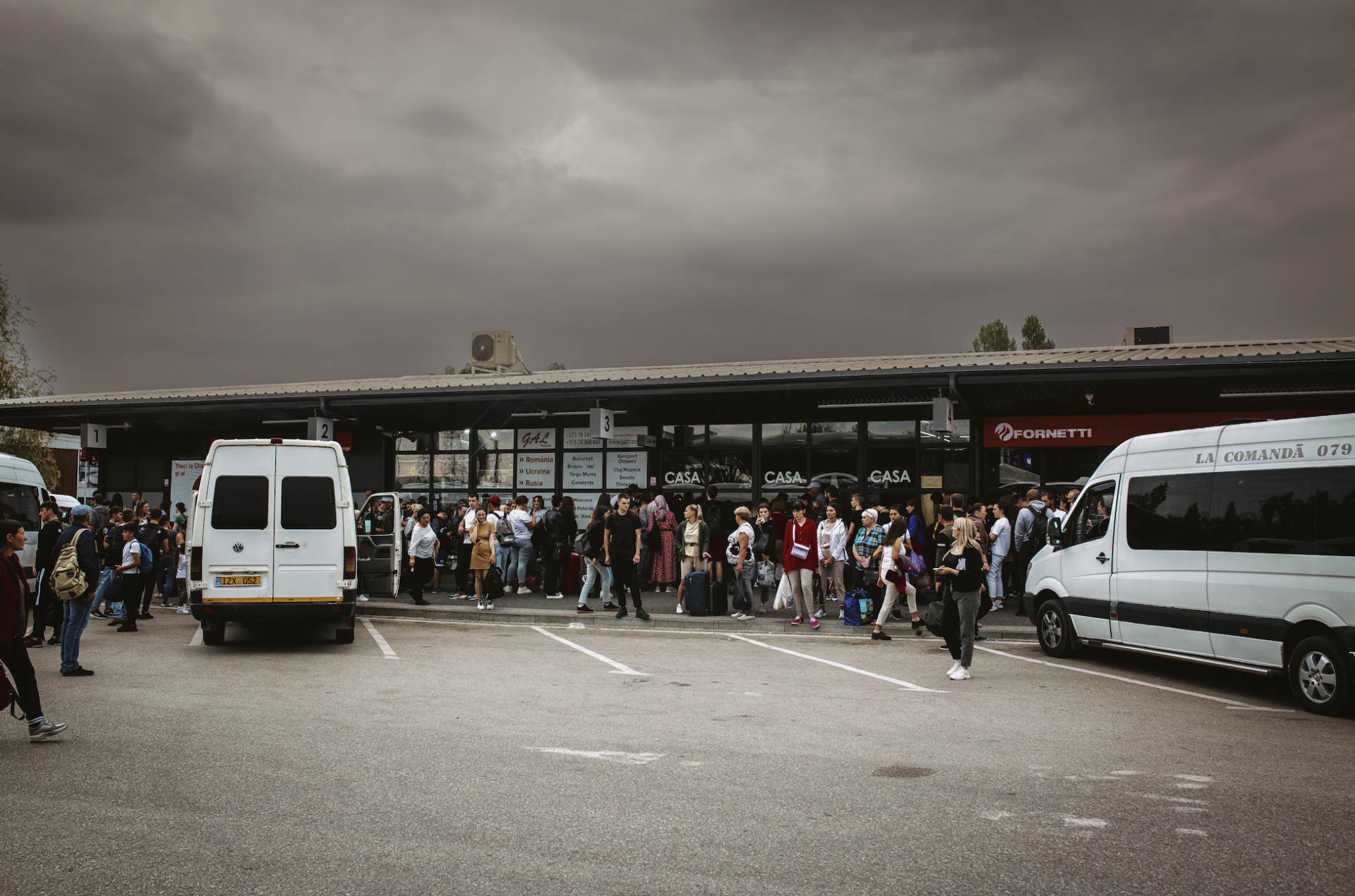
Much of the fiercest unhappiness is centered on the impact that the new arrivals have had on the tight urban housing market. Chisinau rents have surged beyond the reach of many poorly paid Moldovans since the war began, with a one-bedroom apartment up from an average of $200 to $250 a month, according to realtors. For Nadia, a retired machinist who operates a fruit stand in the Bălți central market to supplement a $90 a month pension, an increase in her rent since the spring has been a bridge too far: “I don’t dare to even buy a cup of tea here. We are deserving of help as well.”
Times of crisis are extra ripe for disinformation.
Crises are fertile times for trolls and malevolent actors to spread “fake news.” That was true in the 19th and early 20th centuries when, for example, anti-Semitic newspaper editors in the Russian and Austro-Hungarian empires seized upon authorities’ fears about rampant out-migration to the “New World.” Their papers suggested that unscrupulous Jewish travel agents were goading credulous workers into migrating with false promises of transatlantic riches, and thereby depriving authorities of soldiers and farm laborers. Variations on this theme are increasingly present now, too.
Russian state or Russia-aligned actors are taking advantage of the war’s intensifying economic fallout to spread lies in Moldova, a country with a large Russophile minority in which many people – particularly the elderly – watch Kremlin-backed TV. One interviewee from Odessa recounted how her Moldovan in-laws refused to believe her story of a narrow escape from a Russian bomb. Most recently, persons unknown have been using messaging apps to try and undermine Moldovan sympathy for refugees. Several Telegram channels have perpetuated those accounts of outsized refugee aid, while also claiming—without evidence—that Ukrainian children are violent and so shouldn’t be accommodated in local schools, among other accusations.
Some migrants are more vulnerable than others.
Not all refugees carry the same risk profile, and, as in many other crises, women and ethnic minorities fleeing Ukraine face an array of additional challenges. The Ukrainian government’s decision to prevent most men between the ages of 18 and 60 from leaving the country has ensured that the adult refugee population is overwhelmingly female. In the early weeks of the war, NGOs reported frequent instances of women turning up, alone and often traumatized, at the borders and then jumping straight into random waiting cars or accepting offers of housing from unvetted individuals.
In a similar vein, Ukrainian Roma have reportedly struggled to secure housing in Moldova and other recipient countries due to longstanding stigma, while a number of students from Africa and South Asia were initially denied entry into Ukraine’s neighbors as they fled the Russian invasion. Here, as well, there is both considerable local historical and global contemporary precedent. Eastern European women in domestic service in the U.S. and Western Europe were more susceptible to abuse, not least because many had a limited grasp of the local language and no recourse to justice from uninterested authorities.
Protracted crises change migrant calculations.
In conversation with journalists and NGOs, most Ukrainian refugees are adamant that they’ll return home. Indeed, increasing numbers have done just that since the Russian military advance was partially rolled back. But the longer the war lasts, the more likely it is that some will put down firmer roots elsewhere. Historically speaking, only 30-40 percent of Eastern European migrants ever came back, even temporarily, from the Americas, writes Tara Zahra in The Great Departure. This percentage unsurprisingly dropped considerably at times of longstanding crisis, such as the world wars.
Lingering challenges can also feed into even more personal decision-making. Valeria Zhurbyk and her husband, both accountants for an Odessa construction company now residing in Chisinau, say they’ve decided against having a second child because of Ukraine’s uncertain future. “How could we? In this situation?” she said. Other migrants are abandoning plans to have any kids at all or to marry or to change professions.
A focus on new crises shouldn’t crowd out “old” ones.
For all the horrors of war and their corresponding refugee outflows, crises seldom happen in a vacuum. Donors and officials working in Ukraine’s western neighbors might do well to remember that fact as other longstanding challenges are neglected, and much-needed resources are redirected towards refugee response. For example, Moldovan environmentalists warn of an impending cash crunch before summer 2023 due to a reduction in funding, much of which comes from the same EU, UN, and governmental bodies that are at the forefront of Ukraine-centered humanitarian operations.
This focus on the most topical crisis at the expense of others is arguably all the more shortsighted given that the war threatens to aggravate Moldova’s already degrading environment. Among other issues, environmentalists on both sides of the border-spanning Dniester River fear that ailing Soviet-era wastewater facilities on the river in Ukraine could collapse over the course of the war. Here, too, there is migration-related precedent. Drought and subsequent famine in Moldova in the 1890s and 1920s propelled an exodus from many villages. The impact of those famines might have been magnified by previous waves of out-migration, which had left some villages too short-handed to effectively work their fields.
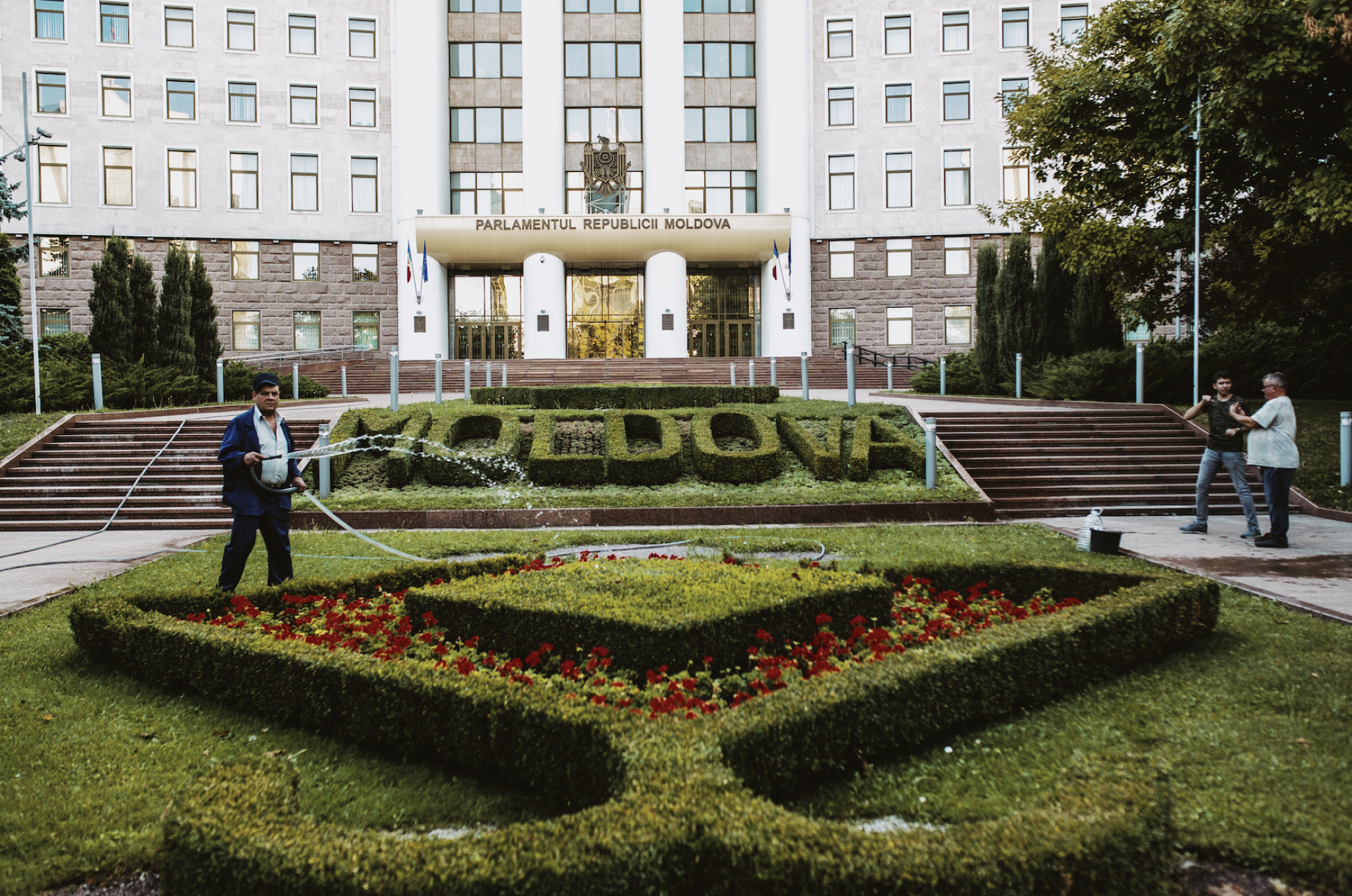
Looking Forward
So, what of the Republic of Moldova’s future? How many of these lessons might apply to its own future, as well as the bubbling, if still nascent, climate-related migration in Moldova and other parts of Eastern Europe? At least a few parallels are coming into focus.
As with Ukrainian refugees, climate-afflicted rural Moldovans are often hellbent on staying home, no matter the conditions. Indeed, despite years of dramatic village out-migration, it is striking quite how many farmers are trying to weather a terrifying array of challenges. Drought and unseasonal winter warmth have sapped crops, just as the fallout from the war has deprived them of a key market (Russia) and affordable fertilizer and other inputs (now up to seven times more expensive than last year).
“We are trapped between the war and climate change,” he said.
Through it all, the likes of Nicolae Kiktenko, who farms about 350 hectares in Falesti district along the Romanian border, are persisting. “We are trapped between the war and climate change,” he said. “And I’m 75. I want to sit in front of the TV with a glass of wine. But people must be fed.”
And as with their peers past and present, would-be climate migrants across Moldova must navigate rampant disinformation, misinformation, and desperately unhelpful “chatter.” Some of this echoes the form of “fake news” that’s roiling Ukrainian refugees and those around them. For instance, the hashtag, ‘There is no Climate Emergency,’ has spread on Romanian and Russian-language social media in recent months.
Yet it goes beyond that. Climatic conditions and post-Soviet agricultural techniques have changed much more rapidly than many aging villagers can fathom. These developments have thrust many of them into even deeper agricultural woe. “The old people insist on doing things like they used to,” said Iulian Toma, the Bălți farmer. “But what do they know? They grew up on collective farms at a time when you couldn’t wear shorts in winter.”
Increasingly, though, there’s a limit to how much even dedicated farmers can stomach. The unrelenting nature of climate stresses, perhaps the most protracted of crises, is changing village calculations as surely as the longevity of the Ukrainian war is influencing some of its citizens.
Victor and Stella Baciu traveled home to Moldova in the early 2000s after two years working in Italy. They were among a number of young, patriotic returnees who sensed tremendous agricultural opportunity. Now, as they harvest yet another drought-sapping yield, they’re second guessing that decision. “Last year was great. We got 12.5 tons of corn per hectare. This year we’re getting five,” she said. “And five is now much more normal. With conditions like these, we see why so many are leaving.”
But in other ways, the contours of climate-related migration appear to be unraveling somewhat differently to previous waves. In Moldova, as in most other countries, climate change is hobbling agriculture—and the villages that depend on it—harder than other professions. This form of migration is consequently even less equitably distributed than those related to conflict and political crises. Chisinau and other cities are, if not exactly thriving, at least surviving. Căușeni’s population has jumped from 16,000 five years ago to around 20,000 now, a surge that the mayor attributes to an exodus from the surrounding countryside. He’s contemplating opening a sixth kindergarten. In most villages, by contrast, you can’t find buyers for cheap homes. “Not even if you give them away,” two realtors suggested.
On a muggy afternoon in Cîrnățeni, a sleepy farming community a few kilometers outside Căușeni, local official Nicolae Popov took a break from painting the school wall for a reflective moment. Now a year away from retirement, he’s spent much of his adulthood watching the village youth migrate. In recent years, he’s seen many of their agriculture-dependent parents follow them. It can be hard to be optimistic about the area’s prospects, he concedes. However, along with a number of his friends and colleagues, he’s resolved to at least slow the rot. Over the past year, they’ve revamped the school discotheque, built a wrestling salon, and carved out space for a free launderette for the elderly. His reasoning is persuasive.
“If we act like a dying place. We will be a dying place,” he said. “But if we create some energy, maybe we can persuade people that it’s worth dealing with all the difficulties.”
Author

Environmental Journalist

Environmental Change and Security Program
The Environmental Change and Security Program (ECSP) explores the connections between environmental change, health, and population dynamics and their links to conflict, human insecurity, and foreign policy. Read more

Explore More
Browse Insights & Analysis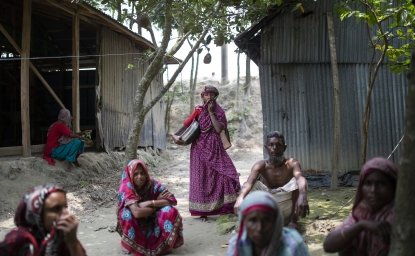
Climate & Migration
